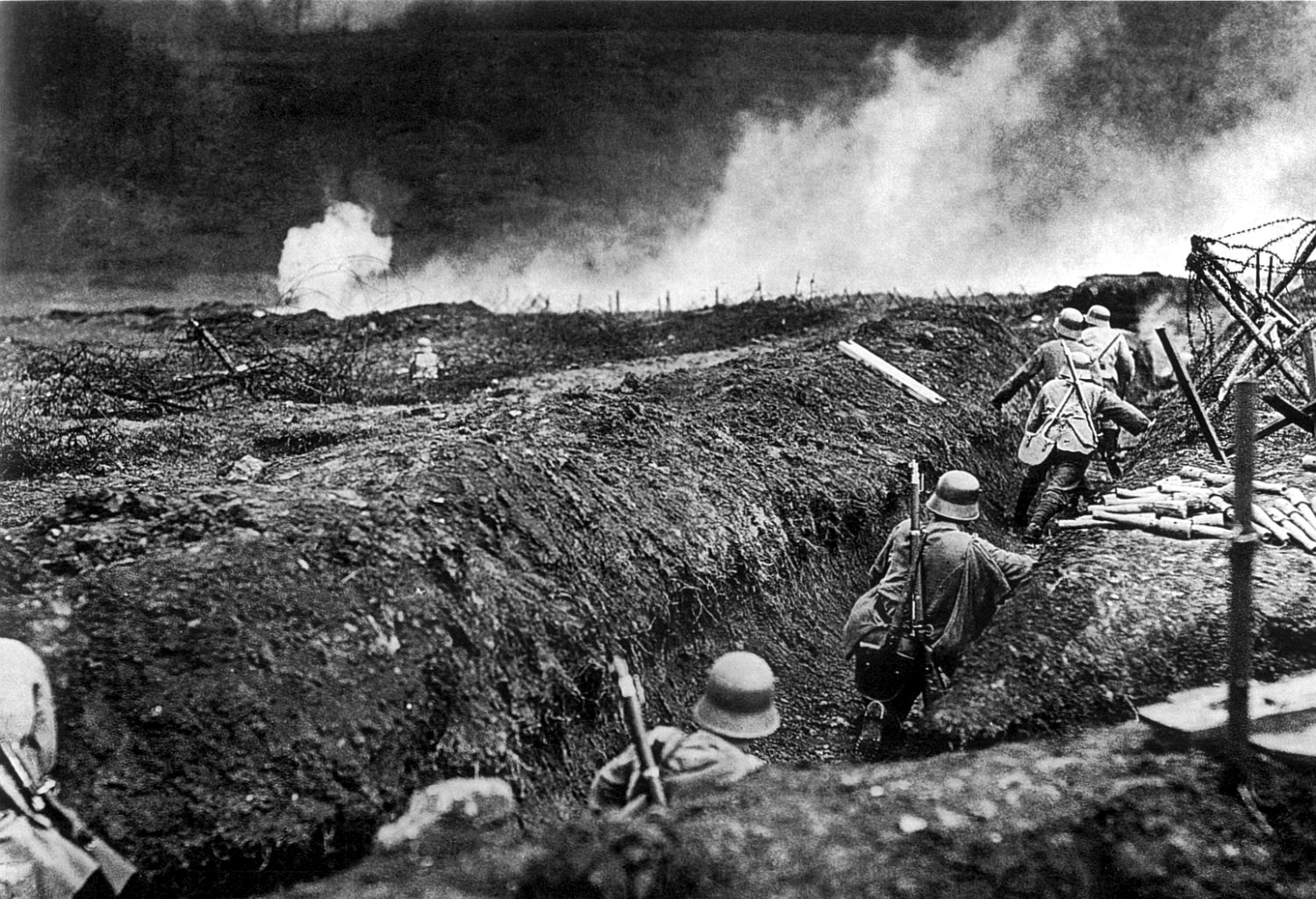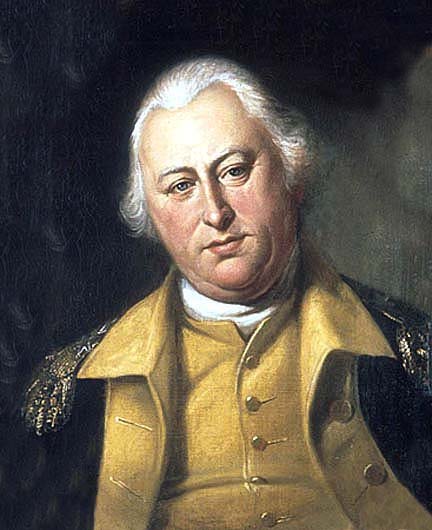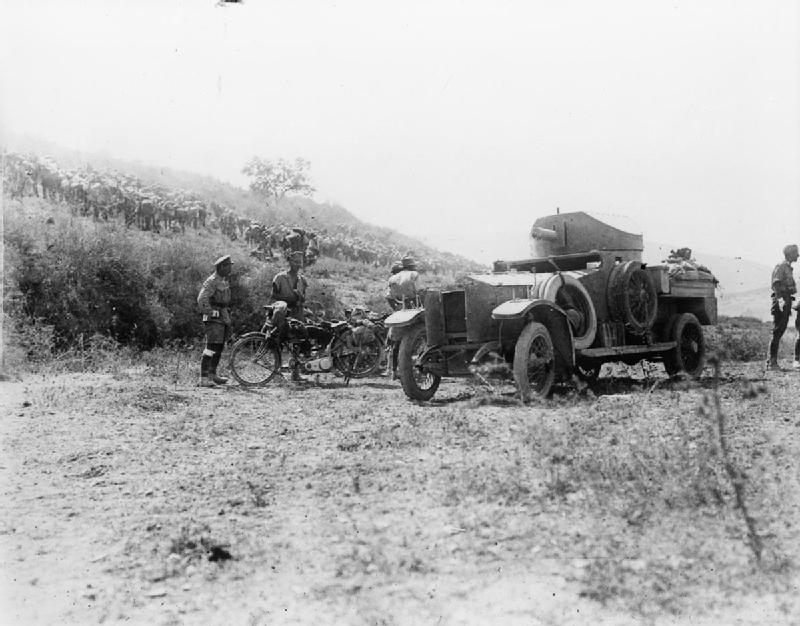|
M1A1 Flamethrower
The M1 and M1A1 were portable flamethrowers developed by the United States during World War II. The M1 weighed 72 lb (33kg), had a range of 15 meters, and had a fuel tank capacity of five gallons. The improved M1A1 weighed less, at 65 lb (29kg), had a much longer range of 45 meters, had the same fuel tank capacity, and fired thickened fuel (napalm). Development of the weapon began in July 1940. The first prototype had the designation of E1. The prototype was further refined into the E1R1 model, which resulted in the adopted M1 model in August 1941. These man-portable weapons saw little use in Europe. They were more common in the Pacific, where they were used extensively when attacking pillboxes and fortifications. The M1's unreliability and lack of developed tactics resulted in the failure of the first flamethrower attack on a Japanese fortification in December 1942. The M1 was gradually replaced by the M1A1 in 1943. The M1A1 was replaced by the M2 flamethrower later duri ... [...More Info...] [...Related Items...] OR: [Wikipedia] [Google] [Baidu] |
Flamethrower
A flamethrower is a ranged incendiary device designed to project a controllable jet of fire. First deployed by the Byzantine Empire in the 7th century AD, flamethrowers saw use in modern times during World War I, and more widely in World War II as a tactical weapon against fortifications. Most military flamethrowers use liquid fuel, typically either heated oil or diesel, but commercial flamethrowers are generally blowtorches using gaseous fuels such as propane. Gases are safer in peacetime applications because their flames have less mass flow rate and dissipate faster and often are easier to extinguish. Apart from the military applications, flamethrowers have peacetime applications where there is a need for controlled burning, such as in sugarcane harvesting and other land-management tasks. Various forms are designed for an operator to carry, while others are mounted on vehicles. Military use Modern flamethrowers were first used during the trench warfare condition ... [...More Info...] [...Related Items...] OR: [Wikipedia] [Google] [Baidu] |
Stormtroopers (Imperial Germany)
Stormtroopers ( or ''Stoßtruppen'') were the only elite shock troops of the Imperial German Army (Deutsches Heer) that specialized in commando style raids, infiltrating the trenches and wiping out the enemy quickly, maneuver warfare, reconnaissance, and shock tactics. In the last years of World War I, ''Stoßtruppen'' (" shock troopers" or "shove troopers") were trained to use infiltration tactics – part of the Germans' improved method of attack on enemy trench warfare. The German Empire entered the war certain that the conflict would be won in the course of great military campaigns, thus relegating results obtained during individual clashes to the background; consequently the best officers, concentrated in the German General Staff, placed their attention on maneuver warfare and the rational exploitation of railways, rather than concentrating on the conduct of battles. This attitude made a direct contribution to operational victories of Germany in Russia, Romania, Serbia and ... [...More Info...] [...Related Items...] OR: [Wikipedia] [Google] [Baidu] |
World War II Infantry Weapons Of The United States
The world is the totality of entities, the whole of reality, or everything that exists. The nature of the world has been conceptualized differently in different fields. Some conceptions see the world as unique, while others talk of a "plurality of worlds". Some treat the world as one simple object, while others analyze the world as a complex made up of parts. In scientific cosmology, the world or universe is commonly defined as "the totality of all space and time; all that is, has been, and will be". Theories of modality talk of possible worlds as complete and consistent ways how things could have been. Phenomenology, starting from the horizon of co-given objects present in the periphery of every experience, defines the world as the biggest horizon, or the "horizon of all horizons". In philosophy of mind, the world is contrasted with the mind as that which is represented by the mind. Theology conceptualizes the world in relation to God, for example, as God's creation, ... [...More Info...] [...Related Items...] OR: [Wikipedia] [Google] [Baidu] |
Photo Of E1R1 Variant Flamethrower In Use
A photograph (also known as a photo, or more generically referred to as an ''image'' or ''picture'') is an image created by light falling on a photosensitivity, photosensitive surface, usually photographic film or an electronic image sensor. The process and practice of creating such images is called photography. Most photographs are now created using a smartphone or camera, which uses a photographic lens, lens to focus the scene's visible spectrum, visible wavelengths of light into a reproduction of what the human eye would perceive. Etymology The word ''photograph'' was coined in 1839 by Sir John Herschel and is based on the Greek language, Greek φῶς ('':el:phos, phos''), meaning "light", and γραφή (''graphê''), meaning "drawing, writing", together meaning "drawing with light". History The first permanent photograph, a contact-exposed copy of an engraving, was made in 1822 using the Bitumen of Judea, bitumen-based "heliography" process developed by Nicéphore Niép ... [...More Info...] [...Related Items...] OR: [Wikipedia] [Google] [Baidu] |
Napalm
Napalm is an incendiary mixture of a gelling agent and a volatile petrochemical (usually gasoline or diesel fuel). The name is a portmanteau of two of the constituents of the original thickening and gelling agents: coprecipitated aluminium salts of ''na''phthenic acid and ''palm''itic acid. A team led by chemist Louis Fieser originally developed napalm for the US Chemical Warfare Service in 1942 in a secret laboratory at Harvard University. Of immediate first interest was its viability as an incendiary device to be used in American fire bombing campaigns during World War II; its potential to be coherently projected into a solid stream that would carry for distance (instead of the bloomy fireball of pure gasoline) resulted in widespread adoption in infantry and tank/boat mounted flamethrowers as well. Napalm burns at temperatures ranging from . It burns longer than gasoline, is more easily dispersed, and adheres to its targets. These traits make it both effective and con ... [...More Info...] [...Related Items...] OR: [Wikipedia] [Google] [Baidu] |
Henry L
Henry may refer to: People and fictional characters * Henry (given name), including lists of people and fictional characters * Henry (surname) * Henry, a stage name of François-Louis Henry (1786–1855), French baritone Arts and entertainment * ''Henry'' (2011 film), a Canadian short film * ''Henry'' (2015 film), a virtual reality film * '' Henry: Portrait of a Serial Killer'', a 1986 American crime film * ''Henry'' (comics), an American comic strip created in 1932 by Carl Anderson * "Henry", a song by New Riders of the Purple Sage Places Antarctica * Henry Bay, Wilkes Land Australia * Henry River (New South Wales) * Henry River (Western Australia) Canada * Henry Lake (Vancouver Island), British Columbia * Henry Lake (Halifax County), Nova Scotia * Henry Lake (District of Chester), Nova Scotia New Zealand * Lake Henry (New Zealand) * Henry River (New Zealand) United States * Henry, Illinois * Henry, Indiana * Henry, Nebraska * Henry, South Dakota * Henry Count ... [...More Info...] [...Related Items...] OR: [Wikipedia] [Google] [Baidu] |
United States Secretary Of War
The secretary of war was a member of the President of the United States, U.S. president's United States Cabinet, Cabinet, beginning with George Washington's Presidency of George Washington, administration. A similar position, called either "Secretary at War" or "Secretary of War", had been appointed to serve the Congress of the Confederation under the Articles of Confederation between 1781 and 1789. Benjamin Lincoln and later Henry Knox held the position. When Washington was inaugurated as the first President under the United States Constitution, Constitution, he appointed Knox to continue serving as Secretary of War. The secretary of war was the head of the United States Department of War, War Department. At first, he was responsible for all military affairs, including United States Navy, naval affairs. In 1798, the United States Secretary of the Navy, secretary of the Navy was created by statute, and the scope of responsibility for this office was reduced to the affairs of the ... [...More Info...] [...Related Items...] OR: [Wikipedia] [Google] [Baidu] |
Blitzkrieg
''Blitzkrieg'(Lightning/Flash Warfare)'' is a word used to describe a combined arms surprise attack, using a rapid, overwhelming force concentration that may consist of armored and motorized or mechanized infantry formations, together with artillery, air assault, and close air support. The intent is to break through an opponent's lines of defense, dislocate the defenders, confuse the enemy by making it difficult to respond to the continuously changing front, and defeat them in a decisive : a battle of annihilation. During the interwar period, aircraft and tank technologies matured and were combined with the systematic application of the traditional German tactic of (maneuver warfare), involving the deep penetrations and the bypassing of enemy strong points to encircle and destroy opposing forces in a (cauldron battle/battle of encirclement). During the invasion of Poland, Western journalists adopted the term ''blitzkrieg'' to describe that form of armored warfare. The ... [...More Info...] [...Related Items...] OR: [Wikipedia] [Google] [Baidu] |
American Expeditionary Forces
The American Expeditionary Forces (AEF) was a formation of the United States Armed Forces on the Western Front (World War I), Western Front during World War I, composed mostly of units from the United States Army, U.S. Army. The AEF was established on July 5, 1917, in Chaumont, Haute-Marne, Chaumont, France under the command of then-major general John J. Pershing. It fought alongside French Army, British Army, Canadian Army, British Indian Army, New Zealand Army and Australian Army units against the Imperial German Army. A small number of AEF troops also fought alongside Italian Army units in 1918 against the Austro-Hungarian Army. The AEF helped the French Army on the Western Front during the Third Battle of the Aisne, Aisne Offensive (at the Battle of Château-Thierry (1918), Battle of Château-Thierry and Battle of Belleau Wood) in the summer of 1918, and fought its major actions in the Battle of Saint-Mihiel and the Meuse-Argonne Offensive in the latter part of 1918. Formatio ... [...More Info...] [...Related Items...] OR: [Wikipedia] [Google] [Baidu] |
Chemical Corps
The Chemical Corps is the branch of the United States Army tasked with defending against and using chemical, biological, radiological, and nuclear ( CBRN) weapons. The Chemical Warfare Service was established on 28 June 1918, combining activities that until then had been dispersed among five separate agencies of the United States federal government. It was made a permanent branch of the Regular Army by the National Defense Act of 1920. In 1945, it was redesignated the Chemical Corps. History Origins Discussion of the topic dates back to the American Civil War. A letter to the War Department dated 5 April 1862 from New York City resident John Doughty proposed the use of chlorine shells to drive the Confederate Army from its positions. Doughty included a detailed drawing of the shell with his letter. It is unknown how the military reacted to Doughty's proposal but the letter was unnoticed in a pile of old official documents until modern times. Another American, Forrest Shephe ... [...More Info...] [...Related Items...] OR: [Wikipedia] [Google] [Baidu] |
United States Campaigns In World War I
The United States campaigns in World War I began after American entry into World War I, American entry in the war in early April 1917. The American Expeditionary Forces, American Expeditionary Force (AEF) served on the Western Front (World War I), Western Front, under General (United States), General John J. Pershing, and engaged in 13 official military campaigns between 1917 and 1918, for which campaign streamers were designated. The streamer uses the colors of the World War I Victory Medal (United States), World War I Victory Medal ribbon which had a red center with a rainbow on each side of the center stripe and a purple edge. The double rainbow symbolizes the dawn of a new era and the calm which follows the storm. The details above and following are taken from "The Army Flag and Its Streamers", a pamphlet which was originally prepared in 1964 by the United States Army Center of Military History, Office of the Chief of Military History, in cooperation with the Office of the C ... [...More Info...] [...Related Items...] OR: [Wikipedia] [Google] [Baidu] |
Hooge, Belgium
Hooge is a small village on the Bellewaerde Ridge, about 4 kilometres east of Ypres in the Flanders, Flemish province of West Flanders in Belgium. Hooge and the nearby locations of Bellewaerde (Ypres), Bellewaerde and Zillebeke were merged into Ypres in 1976. The economy of Hooge is dominated by tourism and agriculture. Tourists are attracted by the World War I battlefields as well as ''Bellewaerde'', the oldest operating theme park in Belgium. History World War I In World War I, the village belonged to one of the easternmost sectors of the Ypres Salient, which made it the site of Battle of Ypres, intense and sustained fighting between German Empire, German and Allies of World War I, Allied forces. From 1914 the front line of the Salient ran through the Hooge area and there was almost constant fighting in the area over the next three years, during which the village and the ''Château de Hooge'' (see below) were totally destroyed. [...More Info...] [...Related Items...] OR: [Wikipedia] [Google] [Baidu] |








